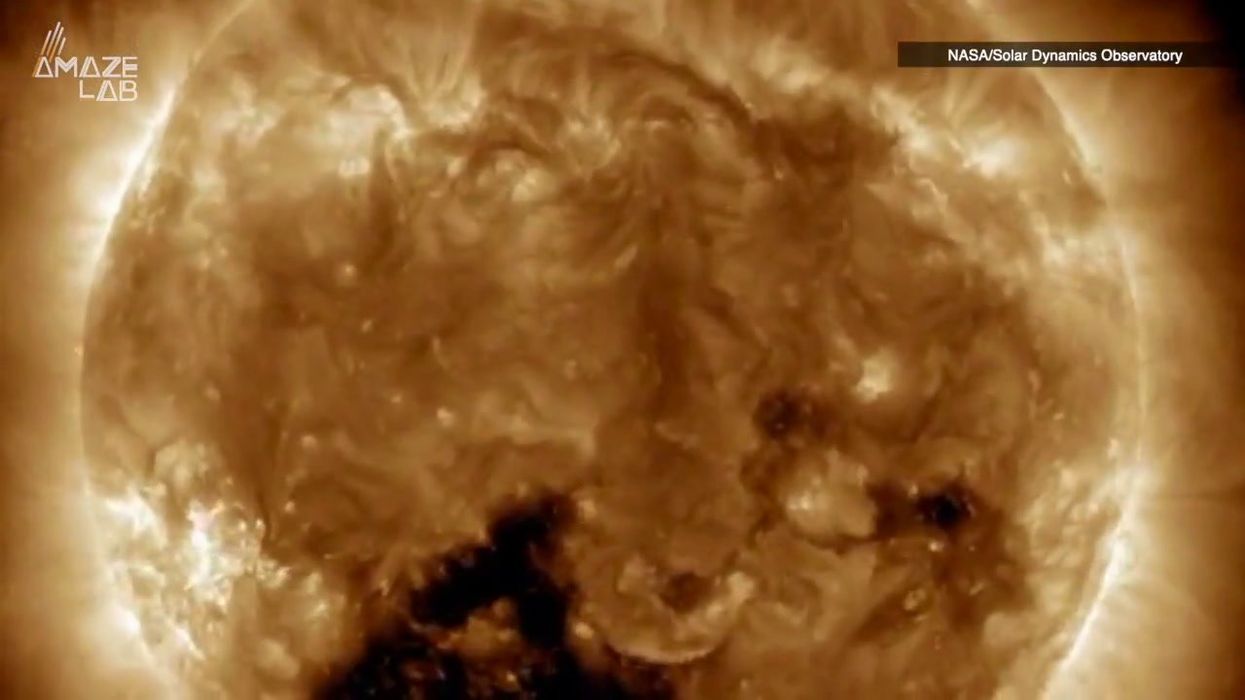Harry Fletcher
Apr 02, 2023
Giant Sunspot Predicted to Unleash Rare and Incredible Aurora Borealis All Across …
content.jwplatform.com
A giant hole has opened up on the surface of the Sun, which could soon result in solar winds measuring millions of miles per hour hurtling towards Earth.
The coronal hole measures 20 times larger than our planet and it’s the second of its type to be detected in the last week.
The solar winds will impact on Friday. The first hole triggered auroras across the sky visible from Earth, and the impact of the second is currently being monitored.
Coronal holes appear as dark patches on images of the Sun when they are taken using ultraviolet and X-rays. The holes are less dense than the rest of the star, which means that the solar wind is more easily able to escape into space.
Sign up to our new free Indy100 weekly newsletter
Winds could potentially impact Earth's magnetic field, as well as affecting satellites and technology.
\u201c48 hr\ud83c\udf1e: The Sun is very active! There is a large equatorial coronal hole, that is growing as it crosses the disk. We will hopefully be observing the coronal hole edge and detecting solar wind originating from it with Solar Orbiter & other spacecraft in a few days \ud83d\udef0\ufe0f\ud83e\udd1e\u201d— Dr Steph Yardley\ud83c\udf1e (@Dr Steph Yardley\ud83c\udf1e) 1679924220
\u201cA second giant 'hole' has appeared on the sun, and it could send 1.8 million mph solar winds towards Earth. It follows the discovery of a coronal hole on the sun 30 times the size of Earth. As this first 'hole' begins rotating away from us.\ud83d\ude2c\u201d— Sumner (@Sumner) 1679951885
The two holes were spotted by NASA's Solar Dynamics Observatory. NASA released a statement saying: “Coronal holes are magnetically open areas that are one source of high-speed solar wind.
“They appear dark when viewed in many wavelengths of extreme ultraviolet light, such as seen here. At times, the solar wind can generate aurora at higher latitudes on Earth.”
The effects are usually not a danger to Earth, but the location of the second hole is right on the Sun's equator which makes it a different proposition.
“The shape of this coronal hole is not particularly special. However, its location makes it very interesting,” Daniel Verscharen, associate professor of space and climate physics at University College London, said in an interview with Insider.
“I would expect some fast wind from that coronal hole to come to Earth around Friday night into Saturday morning of this week.”
Meanwhile, it was recently revealed that a section of the star had left the surface and begun circulating around the top as if it were a huge polar vortex, without anyone really knowing why.
Not only that, but scientists also recently stated that it’s giving off a signal which resembles a ‘heartbeat’.
Have your say in our news democracy. Click the upvote icon at the top of the page to help raise this article through the indy100 rankings.
Top 100
The Conversation (0)














